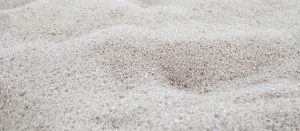Shares in aspiring silica sand miner VRX Silica (ASX: VRX) surged this week on the back of news that it had signed a Native Title Mining Project Agreement for its Muchea project, located just north of Perth.
The agreement was signed between VRX subsidiary Wisecat and representatives of the Whadjuk People, as well as the South West Aboriginal Land & Sea Council Aboriginal Corporation.
The deal paves the way for VRX to begin a formal process for the granting of a Mining Lease for Muchea, which holds a probable ore reserve of 18.7 million tonnes at 99.9 per cent SiO2 and an ungeared NPV10 of $338 million, based on an initial 25-year mine life (out of a potential 100-plus years).
VRX shares gained 15 per cent on the ASX following the news on Friday. At the close, they were trading at 11 cents.
“We are delighted to have reached agreement in good faith with the Whadjuk People and SWALSC,” VRX managing director Bruce Maluish said.
“This represents a significant milestone in the development of our Muchea silica sand project, and clears the path for the grant of the Mining Lease and the miscellaneous licences for Muchea.”
The Native Title Agreement includes a series of shared long-term objectives for the parties involved, as well as measures to achieve those objectives, including the preservation of Aboriginal heritage within the Mining Lease area, promotion of the awareness of the Whadjuk People’s traditional laws and customs with VRX employees and contractors, and maximising employment opportunities at the Muchea project for Whadjuk People contractors.
VRX has developed a mining and rehabilitation methodology specific to the environment at Muchea, which it says will enable a successful restoration of mined areas.
With Muchea and its other advanced silica sand projects, VRX is aiming to be come a leading producer and supplier of high-grade silica sand to the Asia-Pacific markets, which account for 47 per cent of global demand for silica sand products.
One of the most common uses of silica sand is as the primary component in all types of glass manufacturing. It can be used to produce flat glass for buildings and vehicles, container glass for food and beverages and as specialty glass for photovoltaic cells and mobile phones, as well as high-capacity lithium-ion rechargeable batteries, making it an attractive commodity to the rapidly growing renewable technology sector.



